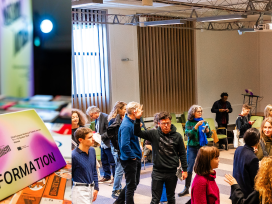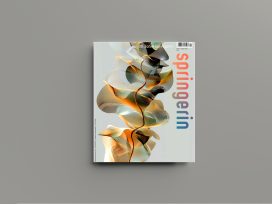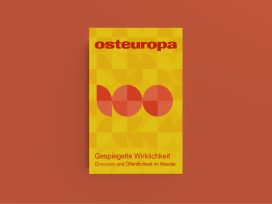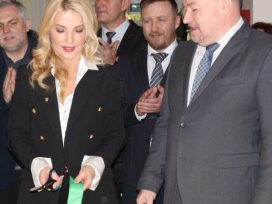For many years Wespennest operated on a low but stable budget, provided equally by sales, advertising and public funding. Since the onset of the financial and economic crises, Wespennest – like other print media in Austria – has been affected by a dramatic decline of advertising revenue. In order to survive we have had to reduce our frequency from four issues to two issues a year. This has resulted in a shift in how the magazine is financed: since 2010, two thirds of the budget come from public funding bodies and one third from sales and advertising. Also to bear in mind is that the public sector acts not only as funder but also as an ad client, and here too we have seen a loss in revenue.
Financing European cultural journals
Like other types of cultural organization reliant on public funds, cultural journals throughout Europe have felt the impact of recession. In addition to funding cuts, journals are also having to negotiate the upheavals taking place in the print sector.
Through a European survey of financing for cultural journals, Eurozine takes stock of the situation of the network, in order to communicate its experiences internally and to others who hold a stake in European cultural policy today. [more]
Read the statements here:
Varlik, Turkey
Ord&Bild and Glänta, Sweden
Vikerkaar, Estonia
Wespennest, Austria
Sodobnost, Slovenia
Host, Czech Republic
Res Publica Nowa, Poland
Mute, UK
Intellectum, Greece
Blätter für deutsche und internationale Politik, Germany
Wespennest‘s public funders are the departments for literature at a national level (Federal Ministry of Education, Arts and Culture) and a regional level (Vienna City Council for Cultural Affairs and Science). Our activities are funded on a one-year-basis; applications and final accounts need to be made every year. We have sporadically managed to raise additional translation money (mostly from public authorities in Austria and in some cases other European countries). We have also increased our efforts to attract private donors, however this source accounts for no more than five to seven per cent of our annual budget.
In terms of “hidden” public funding, we are exempt from VAT, which means savings in billing costs, but at the same time it is a disadvantage in purchasing goods and services. Postal rebates exist for subscriptions and bulk mailing but not for one-off orders of the magazine. The big threat at the moment is increased postage charges – in contrast to Germany and others, the Austrian post no longer offers significant discounts for “printed matter”. All this means that the editorial work is only partly paid. Which is not to say that writers and translators come of well either.
Public funders in our particular sector do indeed act on their commitment to enable a diverse literary scene. However, public funding for magazines within a broader cultural and political spectrum, and the press in general, is not necessarily distributed in a way that results in an equally diverse media landscape. In Austria there is something called “Press and journalism funding”, which has nothing to do with cultural policy in the strict sense. One of the main ideas behind it is the “maintenance of regional diversity”. There has been criticism that, instead of enabling a diverse media landscape, press funding promotes so called “court reporting”. A new “media transparency law”, introduced in 2012, requires all bodies governed by public law to declare their advertising orders placed with periodical media. Whether this will create more clarity as to the relations between the state and state-owned companies and the media remains to be seen.
Wespennest has a website (www.wespennest.at) and an electronic newsletter. Two to three articles per issue are made accessible on the website free of charge (in .pdf format). Integrated into our website is also a “shop”, which serves as an important ordering facility for readers, especially outside the big cities. Having said that, there is still a tight network of quality bookstores in the German speaking countries, unlike in other language markets. We are also exploring options for distribution via an iOS app for cultural journals, currently being developed by Nätverkstan in Gothenburg.
In our opinion, the print journal remains the relevant format for cultural publishing. Magazines with a strong focus on art and literature, combined with passion for design, typography and material, have always existed in a niche market. We don’t believe that they will disappear or become redundant. The question seems more to be whether it will continue to be possible to build solid and committed readerships and communities both within and across generational boundaries. With this in mind we now present every new issue to our local Viennese audience with special events, debates, readings, etc.
How can a network like Eurozine help to consolidate the position of cultural journals in Europe? Eurozine’s major advantage for its partners is, in our opinion, twofold. Firstly, it guarantees and increases the visibility of cultural journals throughout Europe, making transnational themes and the hybrid genre “cultural magazine” as such visible. Secondly, and equally importantly, it contributes to the acknowledgement of the significance of complex textual content. Eurozine’s potential in attracting public attention is a major asset, not only in times of crisis.






